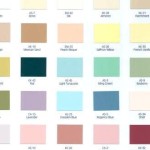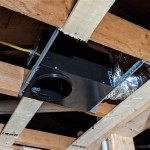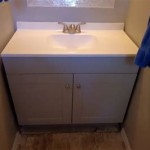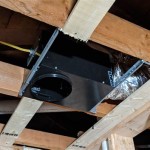Wall Hung Bathroom Vanity Basins: A Comprehensive Overview
Wall hung bathroom vanity basins, also known as floating vanities, represent a modern and increasingly popular choice for bathroom design. These units offer a distinct aesthetic appeal while simultaneously providing practical benefits, especially in bathrooms where space optimization is crucial. They differ from traditional floor-standing vanities by being mounted directly onto the wall, leaving the floor space beneath them completely clear. This design characteristic significantly impacts the visual perception and functionality of the bathroom environment.
Understanding the nuances of wall hung vanity basins requires a detailed examination of their various aspects, from the materials used in their construction to the installation processes they require. Furthermore, evaluating their advantages and disadvantages compared to other vanity styles necessitates a thorough consideration of individual bathroom needs and preferences. This article aims to provide a comprehensive overview of wall hung bathroom vanity basins, covering their composition, installation, benefits, drawbacks, and key considerations for prospective buyers.
Material Composition and Construction
The materials used in constructing wall hung vanity basins are critical determinants of their durability, aesthetics, and overall performance. A variety of materials are employed, each offering unique properties and influencing the price point of the finished product.
Wood, particularly engineered wood such as plywood and MDF (Medium-Density Fiberboard), is a common choice for the vanity cabinet itself. Plywood is known for its strength and resistance to warping, making it a robust option for supporting the weight of the basin and accompanying plumbing. MDF, on the other hand, provides a smooth surface ideal for painting or applying veneers. Solid wood is also used, although it tends to be more expensive and susceptible to humidity-related issues if not properly sealed and treated.
The basin itself can be made from a variety of materials, including ceramic, porcelain, glass, stone, and acrylic. Ceramic and porcelain are popular choices due to their durability, stain resistance, and ease of cleaning. Glass basins offer a contemporary aesthetic but may require more frequent cleaning to maintain their clarity. Stone basins, such as marble or granite, provide a luxurious look but are typically more expensive and may require specialized maintenance. Acrylic basins are lightweight and relatively inexpensive, but they may be more prone to scratching and staining than other materials.
Hardware, such as hinges, drawer slides, and mounting brackets, also plays a significant role in the overall quality and longevity of a wall hung vanity basin. Stainless steel and other corrosion-resistant metals are preferred for these components to withstand the humid bathroom environment.
The finish applied to the vanity cabinet is another crucial aspect. Options include paint, stain, laminate, and veneer. Paint offers a wide range of color choices and can be easily touched up, while stain enhances the natural grain of the wood. Laminate provides a durable and water-resistant surface, and veneer offers the look of solid wood at a lower cost. The choice of finish should be carefully considered to ensure it complements the overall bathroom design and provides adequate protection against moisture.
Installation Considerations and Requirements
Installing a wall hung vanity basin differs significantly from installing a floor-standing unit and requires careful planning and execution. Proper installation is essential to ensure the vanity is securely mounted to the wall and that the plumbing connections are correctly made.
The first step is to identify the wall studs to which the vanity will be attached. Wall studs provide the necessary support to bear the weight of the vanity and its contents. A stud finder can be used to locate the studs behind the drywall or plaster. It is crucial to ensure that the studs are structurally sound and capable of supporting the weight. If the studs are not adequately spaced or are compromised, additional bracing may be required.
The mounting height of the vanity basin is another important consideration. The standard height for a bathroom vanity is typically between 30 and 36 inches from the floor to the top of the basin. However, the optimal height may vary depending on the user's height and preferences. It is advisable to measure the height of existing vanities in the home or other bathrooms to determine a comfortable and ergonomic height.
Plumbing considerations are also critical. The existing plumbing lines for the water supply and drain may need to be adjusted to accommodate the wall hung vanity. This may involve cutting and re-routing pipes, which should be done by a qualified plumber to avoid leaks or other plumbing problems. It is also essential to ensure that the drainpipe is properly sloped to allow for efficient drainage.
The wall surface itself must be prepared to receive the mounting hardware. This may involve patching any holes or imperfections and ensuring that the surface is level and smooth. The mounting brackets should be securely attached to the wall studs using appropriate screws or bolts. It is essential to follow the manufacturer's instructions carefully to ensure the vanity is properly installed and supported.
Once the vanity is mounted, the plumbing connections can be made. Flexible supply lines are often used to connect the water supply to the faucet. The drainpipe should be connected to the existing drain line using appropriate fittings and sealant. After all connections are made, it is essential to check for leaks and ensure that the water flows properly.
Finally, the area around the vanity should be sealed with caulk to prevent water damage and create a clean and finished look. The caulk should be applied evenly and smoothly to all seams and joints.
Advantages and Disadvantages Compared to Other Vanity Styles
Wall hung vanity basins offer several advantages over traditional floor-standing vanities, but they also have some potential drawbacks that need to be considered.
One of the primary advantages is space saving. Because they are mounted on the wall, wall hung vanities free up floor space, making the bathroom appear larger and more open. This is particularly beneficial in small bathrooms where maximizing space is crucial. The open space beneath the vanity also makes it easier to clean the floor, as there are no legs or other obstructions to navigate around.
Another advantage is the flexibility in height adjustment. Wall hung vanities can be mounted at any desired height, allowing for customization to suit individual needs and preferences. This is particularly useful for individuals with disabilities or those who prefer a higher or lower vanity height.
Aesthetic appeal is another significant advantage. Wall hung vanities offer a modern and minimalist look that can enhance the overall design of the bathroom. They are available in a wide range of styles, colors, and materials, allowing for customization to match any décor.
However, wall hung vanities also have some potential drawbacks. One of the main concerns is weight capacity. Because they are supported only by the wall, wall hung vanities may have a lower weight capacity than floor-standing units. It is essential to choose a vanity that is rated to support the weight of the basin and any items stored inside.
Installation can also be more complex and time-consuming than installing a floor-standing vanity. As mentioned earlier, it is crucial to locate and utilize wall studs for secure mounting. If the studs are not adequately spaced or are compromised, additional bracing may be required, adding to the cost and complexity of the installation.
Storage space can be another concern. Wall hung vanities typically offer less storage space than floor-standing units, as the open space beneath the vanity cannot be used for storage. However, this can be mitigated by choosing a larger vanity or by incorporating additional storage solutions, such as wall-mounted cabinets or shelves.
Finally, the cost of a wall hung vanity can be higher than that of a similar floor-standing unit. This is due to the more complex construction and installation requirements. However, the added cost may be justified by the aesthetic and functional benefits they offer.
In summary, wall hung bathroom vanity basins provide a contemporary and space-saving alternative to traditional vanity styles. Their advantages in terms of aesthetics, space optimization, and height adjustability make them an appealing choice for modern bathrooms. However, potential buyers should carefully consider the installation requirements, weight capacity, storage space, and overall cost before making a decision.

Harbour Clarity 600mm Wall Mounted Vanity Unit Basin Tap Warehouse

Sonix Grey 800mm Wall Hung Vanity Basin Unit With Drawers Buy At Bathroom City

Scheme 1000mm Wall Mounted Vanity Basin Seven Colours

Aquila 800mm Wall Hung Vanity Unit With Basin And Matt Black Handles In Graphite Aqfr008

Elegant Wall Mounted White Bathroom Vanity Unit And Sink Basin Home Furniture

Double Sink Vanity 1200mm Bathroom Unit Black Ribbed Impact Furniture

Venice Linea 600mm Rustic Oak Wall Hung 2 Drawer Vanity Unit Victorian Plumbing

Harbour Clarity 900mm Wall Hung Vanity Unit Basin Drench

Glossy White Isla Wall Hung Basin Vanity Unit With Sy Deep Ceramic

Countertop Bathroom Vanity Unit With Basin 600mm Ribbed Black Impact Furniture
Related Posts







